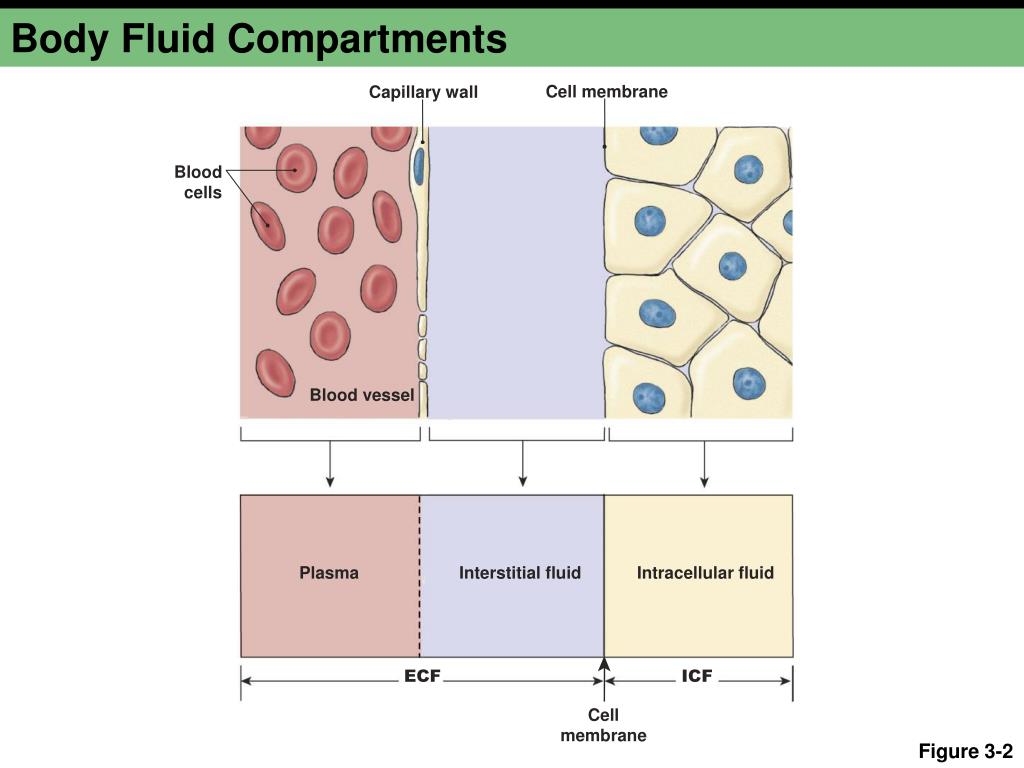
- DIAGRAM INTRACELLULAR EXTRACELLULAR BODY FLUID COMPARTMENTS SKIN
- DIAGRAM INTRACELLULAR EXTRACELLULAR BODY FLUID COMPARTMENTS DOWNLOAD
– Saliva is a clear tasteless, odourless, slightlyĪcidic, viscous fluid consisting of secretions from According to Stedman’s medical dictionary, 26thĮd.METABOLIC ALKALOSIS RESPIRATORY ALKALOSIS In cases suffering from severe oliguria or anuria Iatrogenic (excessive administration of cortisol andġ. If not treated convulsions, coma and death can follow.ģ. Drugs like indomethacin, phenylbutazone and Stress (like after major surgical operation)ģ. It can occur in excess of ADH secretionĢ. Occurs in disease like Primary Aldosteronism and Cushing’sĪbnormal resting membrane potential and abnormalities ofĮxcitability and conductivity is seen in the muscles andġ. This condition is rare in adults and is seen in adults in the Fall in GFR results in – oliguria, anuria and uremia. The fall in BP results in – pallor, tachycardia and coldĢ. So the clinical picture is a combined depletion of sodium andġ. Sodium depletion as a rule, is associated with water depletion Excessive loss – Addison`s disease, severe diarrhoea, burns. The role of efferent sympathetic nerve activity (ESNA)ġ.In response to vascular volume changes and the effector mechanisms The signals that impinge upon the juxtaglomerular apparatus.The vascular compartment, its subdivisions, its relation to the interstitialĬompartment and the location of receptors.another that controls extracellular fluid (orġ909 - Sorensen introduced the concept of.(reninangiotensin-aldosterone system and atrial one that controls extracellular fluid Na+Īs we will see extracellular fluid volume.The control of salt and water balance is performed.Minimal urine volume to excrete solute load Components of Daily Obligatory Water Loss.
DIAGRAM INTRACELLULAR EXTRACELLULAR BODY FLUID COMPARTMENTS SKIN
Skin – insensible perspiration and sweating Under unnatural conditions – I V and rectalĢ. (values below all given as % of total body weight, TBWt)Ĥ. Total intracellular H2O = 36% Body fat = 18%

Total extracellular H2O = 24% Bone and Conn. The osmotic pressure of the proteids of the serum determines and whereas capillary pressure determines transudation, The blood in the capillaries and the osmotic attraction of the there must be a balance between the hydrostatic pressure of

OTHER BODY FLUIDS – SYNOVIAL FLUID, SWEAT, TEARS EXTRA-CELLULAR FLUIDS, INTRA-CELLULAR FLUIDSħ.
DIAGRAM INTRACELLULAR EXTRACELLULAR BODY FLUID COMPARTMENTS DOWNLOAD
The regulation of extracellular volume status is regulated by a complex neuro-endocrine mechanism, designed to regulate sodium in the extracellular fluid.Ĭheck out ppt download link in descriptionĢ. The regulation of intracellular fluid status is largely governed by the regulation of the interstitial fluid osmolarity, which is regulated by the secretion of antidiuretic hormone from the posterior pituitary gland. Body fluid status is governed by the difference between fluid inputs and outputs fluid input is regulated by the thirst mechanism, with fluid outputs consisting of gastrointestinal, renal, and insensible losses. The movement of fluid to and from the intracellular compartment and the interstitial fluid compartment, is governed by the relative osmolarities of the two compartments. More recent evidence suggests that a model incorporating the effect of the endothelial glycoclayx layer, a web of glycoproteins and proteoglycans that are bound on the luminal side of the vascular endothelium, better explains the observed distribution of fluids. The movement of fluids between the intravascular and interstitial compartments, is classically described as being governed by Starling forces, leading to a small net efflux of fluid from the intravascular to the interstitial compartment. The extracellular compartment is divided into intravascular, interstitial and transcellular compartments. In healthy humans, the body is composed of approximately 60% water, distributed between intracellular and an extracellular compartments.

An understanding of the physiology of body fluids is essential when considering appropriate fluid resuscitation and fluid replacement therapy in critically-ill patients.


 0 kommentar(er)
0 kommentar(er)
